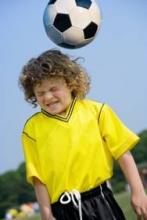As awareness and understanding of traumatic brain injury has grown among the military and deployed soldiers, closer to home, it’s athletes of all levels who are feeling the hit. From Little League to the NFL, concussions are on the rise. At a hearing held by the Senate Committee on Commerce, Science, and Transportation, witnesses testified that the community isn’t always aware of the severity of the illness.
Alexis Ball, a former soccer player at the University of New Mexico, testified that she sustained 10 concussions over 8 years of playing competitive soccer. Despite repeated concussions, Ms. Ball said she continued to play because she and her family did not understand the severity of her injuries.
Because of sequelae from her repeated injuries, Ms. Ball was medically disqualified from playing collegiate sports in 2009. Today, she has permanent impairments to her vision and balance.
While pro football and hockey players are often saddled with multiple concussions , sometimes ending their career, concussion is most commonly seen among young athletes. According to data on concussion-related emergency room visits, researchers have found that about 40% of the time, the patient is between the ages of 8 to 13.
While concussions are a common occurrence on the field, most doctors lack the proper training in the treatment and diagnosis of the condition, according to Dr. Jeffrey Kutcher, chair of the sports neurology section of the American Academy of Neurology, who also testified before the Senate committee.
Dr. Kutcher said that most physicians don’t understand that concussions must be handled differently for every patient, as opposed to a “cookbook” approach.
While little is known about the complexity of the condition, researchers are working to change that. At the annual meeting of the American College of Emergency Physicians, a team doctor for the San Francisco 49ers discussed a new tool for gathering data on sports-related concussions. By using mouthguard-based accelerometers, physicians aim to learn about the type of hits that cause concussions, and hopefully find ways to protect players against future head injuries.
Physician groups are also working to improve their training on diagnosing and treating concussion. AAN’s Dr. Kutcher said his group is working to incorporate concussion training at the residency level for neurologists, as well as primary care and emergency physicians. The AAN is also developing sports neurology fellowships and developing CME on concussion. The group has also released a Sports Concussion Toolkit for providers, including basic sports concussion guidelines.
–Frances Correa (@FMCReporting)

